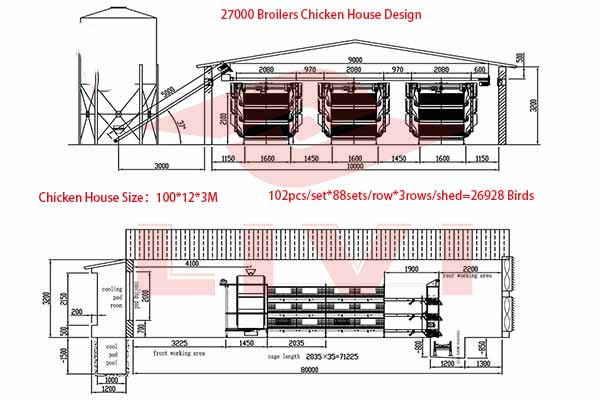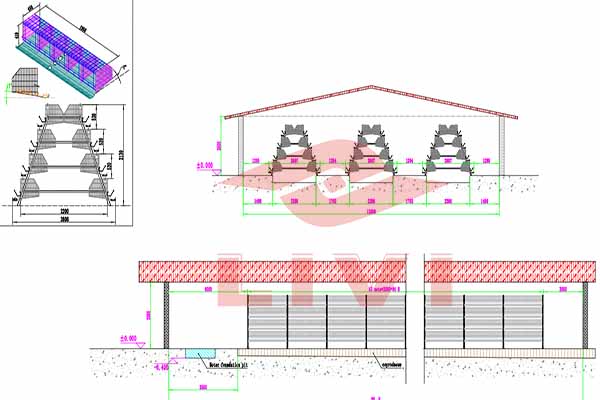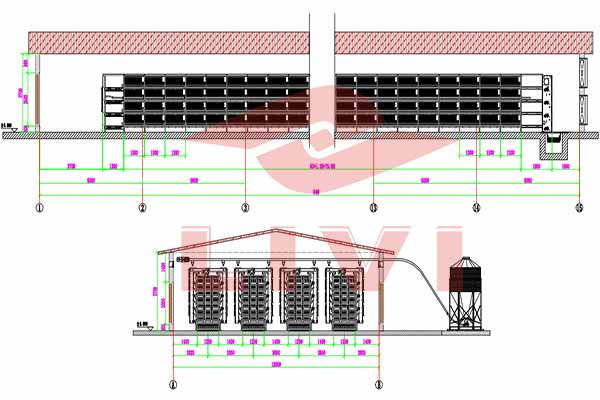Optimizing Chicken Battery Cage Systems for 10,000 Chickens in Nigeria
In the poultry industry, efficient and scalable farming systems are crucial for maximizing production and profitability. For Nigeria’s growing poultry sector, implementing a chicken battery cage system for 10,000 chickens requires careful planning and the right technology. This article delves into the key aspects of setting up a comprehensive battery cage system tailored for high-density chicken farming in Nigeria.
Key Considerations for a 10,000 Chicken Battery Cage System
- Space Allocation: Each chicken requires approximately 0.25 square meters of space. A 10,000-chicken system would need around 2,500 square meters of space.
- Health Management: Battery cages reduce the risk of disease transmission and allow for easier monitoring of the flock’s health.
- Feed Efficiency: The system should be designed to facilitate easy feed distribution and waste management.
- Airflow and Ventilation: Proper ventilation is essential to maintain air quality and prevent heat stress.
- Water Supply: An automated water system should be integrated to ensure constant access to fresh water.
Components of an Effective Battery Cage System
| Component | Description |
|---|---|
| Cages | Robust, easy-to-clean, and well-ventilated cages that support the weight of the chickens. |
| Feeding Equipment | Automated feeding systems that distribute feed evenly and minimize waste. |
| Watering Systems | Automated water systems with nozzles that prevent the chickens from fouling the water. |
| Environmental Control Units | Units that regulate temperature, humidity, and air quality within the poultry house. |
| Sanitation Equipment | Disinfection systems and waste management facilities to maintain a hygienic environment. |
According to a report by the Nigerian Poultry Association, the adoption of modern farming technologies has led to a significant increase in productivity. Implementing a well-designed battery cage system can yield an average of 2.5 kg of meat per chicken per year, compared to traditional methods that produce around 1.5 kg.
Cost and ROI Analysis
The initial investment for a 10,000-chicken battery cage system in Nigeria can range from $100,000 to $200,000, depending on the scale and quality of the equipment. However, the return on investment (ROI) can be substantial, with a payback period as short as 18 months, considering the increased production rates and reduced labor costs.
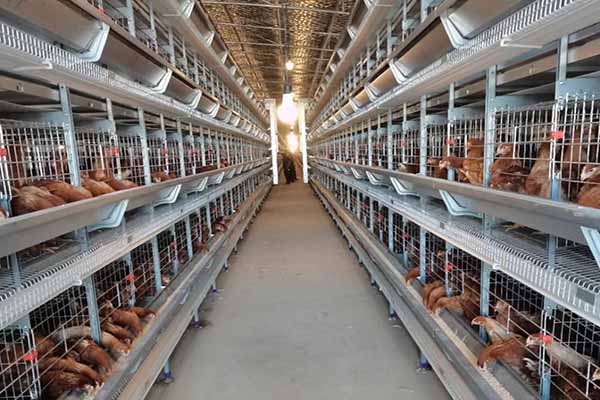
For instance, with an average selling price of N200 per kilogram of chicken meat, a farm producing 25,000 kg of meat per year could ge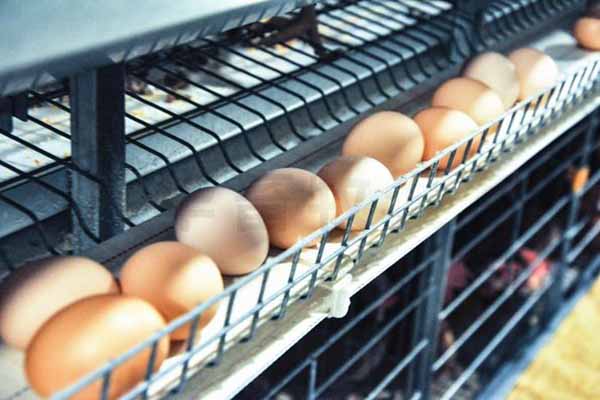 nerate a revenue of N5,000,000. Subtracting the costs of feed, labor, and other expenses, the net profit could be around N1,500,000 per year.
nerate a revenue of N5,000,000. Subtracting the costs of feed, labor, and other expenses, the net profit could be around N1,500,000 per year.
Conclusion
Investing in a chicken battery cage system for 10,000 chickens in Nigeria can be a game-changer for poultry farmers and investors. With the right planning and technology, these systems offer significant advantages in terms of productivity, health manage ment, and profitability.
ment, and profitability.
For more information on implementing a battery cage system for your farm, please leave a comment below or contact us directly. We at LIVI Mechanical offer free poultry design plans and equipment quotations to help you get started.


